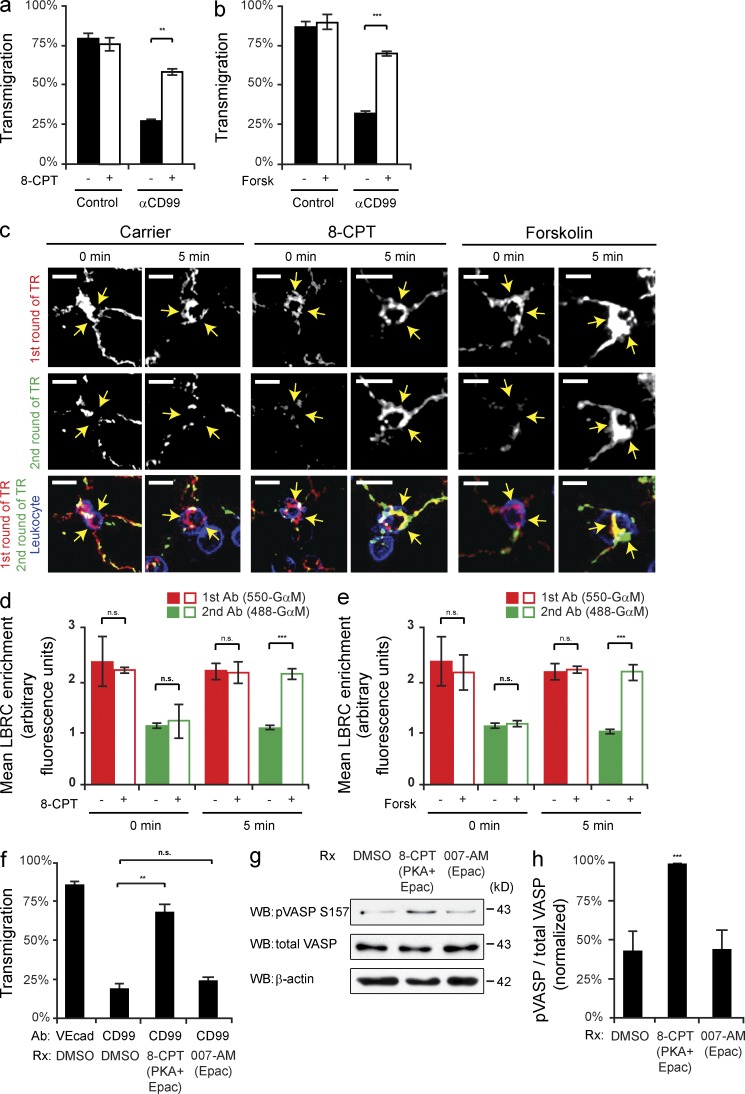Figure 3.
Raising intracellular cAMP reverses anti-CD99 blockade of transmigration and restores TR of the LBRC. (a and b) Quantitative TEM assays were performed using HUVECs pretreated with anti–VE-cadherin (control) or anti-CD99 mAb (IgG1). After 50 min, 8-CPT (30 µM), Forskolin (30 µM), or DMSO (control) was added to the cells for 10 min. (c) Two-color TR assays were performed (as previously described). In brief, before warming monolayers to 37°C, 488-GαM IgG2a and 8-CPT, Forskolin, or DMSO were added. Cells were then incubated at 37°C for either 0 or 5 min and subsequently washed, fixed, and stained. Arrows denote LBRC enrichment around anti-CD99–arrested monocytes. (d and e) LBRC enrichment was quantified for both 550- or 488-GαM antibodies. (f) Quantitative TEM assays were performed using HUVECs pretreated with either anti–VE-cadherin (control) or anti-CD99 mAb. PBMCs were then added and allowed to transmigrate at 37°C for 50 min. 10 min before fixation, either 8-CPT (general cAMP analogue) or 007-AM (selective-Epac activator) was added to cells. (g) HUVECs were treated in parallel with either 8-CPT or 007-AM for 10 min and then lysed. Immunoblot analysis of pVASP-S157 normalized to total VASP was used to assess PKA activity induced by the drugs. (h) Quantification of results above. Bars, 10 µm. Images are representative of two (c) or three (g) independent experiments. Numerical values are the average of two (d and e) or three (a, b, f, and h) independent experiments. Error bars represent SD (h) or SEM (a, b, and d–f; **, P < 0.01; ***, P < 0.001; Student’s t test [a, b, and d–f] and ANOVA [h]).

